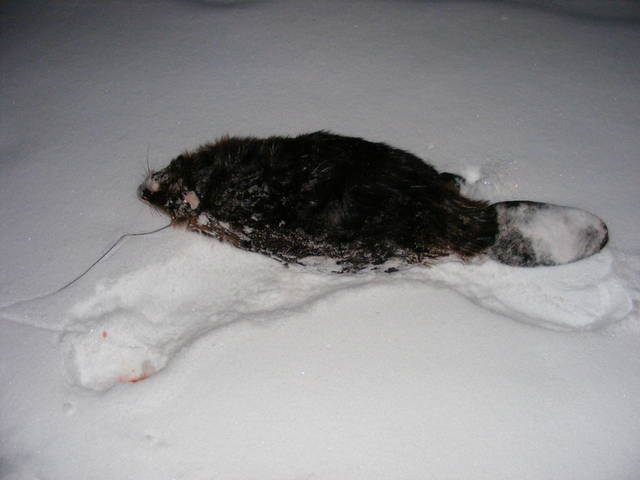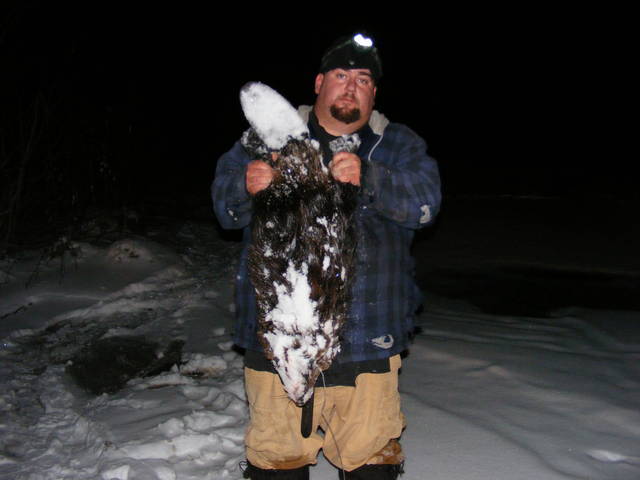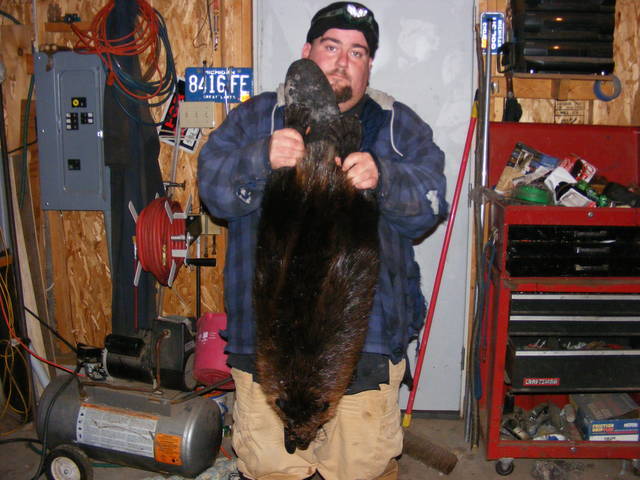Rob,
I've witnessed alot of drained beaver ponds, and just something you get a feel for. I'm looking at the general area and assuming there is a run on each side of the feedpile. The one farthest from you as you took that video is pretty obvious, and the stub tree may be the edge of the run. The dark ice also indicates activity or shallow dark bottom, and freezes last. Watch out walking on that dark ice this time of year, it can change in warm spells. If you look at the feedpile the brush appears to be thinner in the center, al;so indicating a run under it. Later in the winter these will show brush above ice but the beaver eat them out and are often clearer than they appear now. Low shear banks in the bank also indicate the beaver removed material when forming runs, something to remember when looking for bank dens and bog ponds. I always first look at the outside edges of the feedpiles. With heavy ice and snow later, I chop a small hole in the ice and feel for depressions in the bottom, to indicate runs. Good ice you can often "sound" for runs from the "tone" of your spud on the ice. The runs sound hollow and often the ice is quite thin with even snow cover and extreme temps. The snow insulates them and the receding ice holds air between the ice and water. With so little snow at your current location, you may even be able to see some bubble trails coming out of that house, from the air leaving the beavers fur and their air discharge while swimming under ice. Also in flooded timber or bogs, you can kinda just look and see obvious trails going through the bog and timber to feeding areas or a piece of high bank, where there are likely bank dens feed holes. Your gonna chop alot of duds before you get the hang of it. Likely gonna dull a few spuds on rocky bottoms also. I carry a file in my snowmobile for just such occurances. Chainsaw file too. LOL




